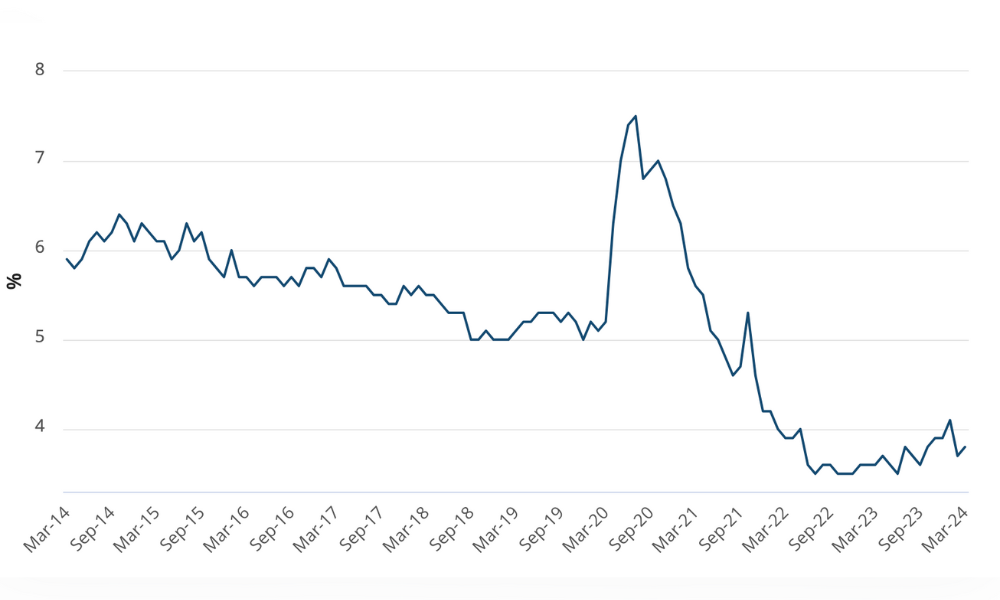Talent shortages are hitting more than a third of Australian businesses, but research shows that many organisations lack a proper talent development strategy to combat the problem.
Do you have a plan in place to make sure your organisation has the talent it needs in the future?
According to research by Right Management, 36% of Australian businesses lacked skilled talent for key positions, while 18% reported a shortage of talent at all levels.
But Rosemarie Dentesano, regional leader and talent management principal at Right Management, said that few organisations are doing strategic workforce planning to tackle the problem.
“We did some research last year around how many organisations are doing strategic workforce planning. We found that only 21% of organisations across Asia-Pacific have got a fully implemented strategic workforce plan. Then we found that of that 21%, 27% have a plan, but have real difficulty implementing it.
“One out of five are ready to go, of the other four, 10% are saying, ‘Don't even think about it’, 12% are saying, ‘We've got no workforce planning or strategy’, and others are saying, ‘We've done some planning, but we haven't executed it’. The big failure is the execution. They're good at planning, but often it's the day to day or the immediate that gets in the way of execution.”
Dentesano said that since the global financial crisis, organisations had been challenged to invest during a time of downsizing.
“Often you may have a plan, but it's difficult to implement because the funds or the budget just aren't available. It's a bit of a challenge because if you don't invest, you're going to come to a point in time where you have got a mismatch in terms of talent you need versus talent you want.
“Organisations are being driven really heavily in terms of shareholder returns and profitable outcomes at significant cost.”
In terms of implementing a tactical approach to talent development, she said the first step would be to look at what the organisation's business strategy was for the next five to 10 years and then map the core capabilities or competencies that would be required.
“Once you've mapped them, assess the individual capabilities in the organisation to see whether or not you've got the right people in the business with the right skills for the five to 10 year business execution and then start to look at a development strategy for how you are either going to build the internal capability of the team you've got or whether you need to think about some talent-sourcing strategies.
“Most organisations want to keep the staff they have and need to see whether or not they can develop those skills and if they can't, they need to look at where they can source their talent from.”
Dentesano said once a plan was in place, it was a matter of activating it.
“Your development strategy may also include work around employee engagement and ensuring that you are able to retain the workforce you've got.”
Do you have a talent development strategy in place?
According to research by Right Management, 36% of Australian businesses lacked skilled talent for key positions, while 18% reported a shortage of talent at all levels.
But Rosemarie Dentesano, regional leader and talent management principal at Right Management, said that few organisations are doing strategic workforce planning to tackle the problem.
“We did some research last year around how many organisations are doing strategic workforce planning. We found that only 21% of organisations across Asia-Pacific have got a fully implemented strategic workforce plan. Then we found that of that 21%, 27% have a plan, but have real difficulty implementing it.
“One out of five are ready to go, of the other four, 10% are saying, ‘Don't even think about it’, 12% are saying, ‘We've got no workforce planning or strategy’, and others are saying, ‘We've done some planning, but we haven't executed it’. The big failure is the execution. They're good at planning, but often it's the day to day or the immediate that gets in the way of execution.”
Dentesano said that since the global financial crisis, organisations had been challenged to invest during a time of downsizing.
“Often you may have a plan, but it's difficult to implement because the funds or the budget just aren't available. It's a bit of a challenge because if you don't invest, you're going to come to a point in time where you have got a mismatch in terms of talent you need versus talent you want.
“Organisations are being driven really heavily in terms of shareholder returns and profitable outcomes at significant cost.”
In terms of implementing a tactical approach to talent development, she said the first step would be to look at what the organisation's business strategy was for the next five to 10 years and then map the core capabilities or competencies that would be required.
“Once you've mapped them, assess the individual capabilities in the organisation to see whether or not you've got the right people in the business with the right skills for the five to 10 year business execution and then start to look at a development strategy for how you are either going to build the internal capability of the team you've got or whether you need to think about some talent-sourcing strategies.
“Most organisations want to keep the staff they have and need to see whether or not they can develop those skills and if they can't, they need to look at where they can source their talent from.”
Dentesano said once a plan was in place, it was a matter of activating it.
“Your development strategy may also include work around employee engagement and ensuring that you are able to retain the workforce you've got.”
Do you have a talent development strategy in place?





